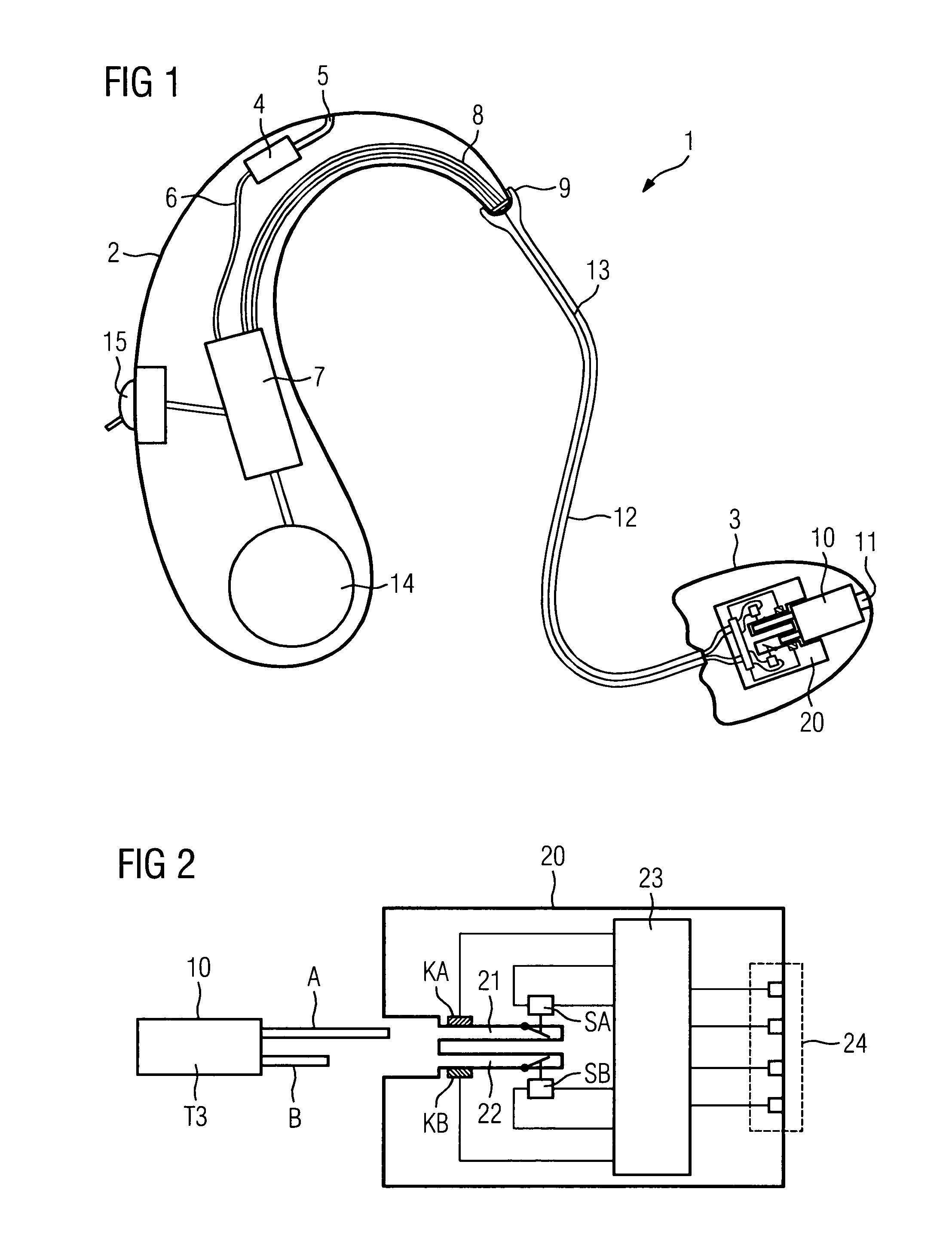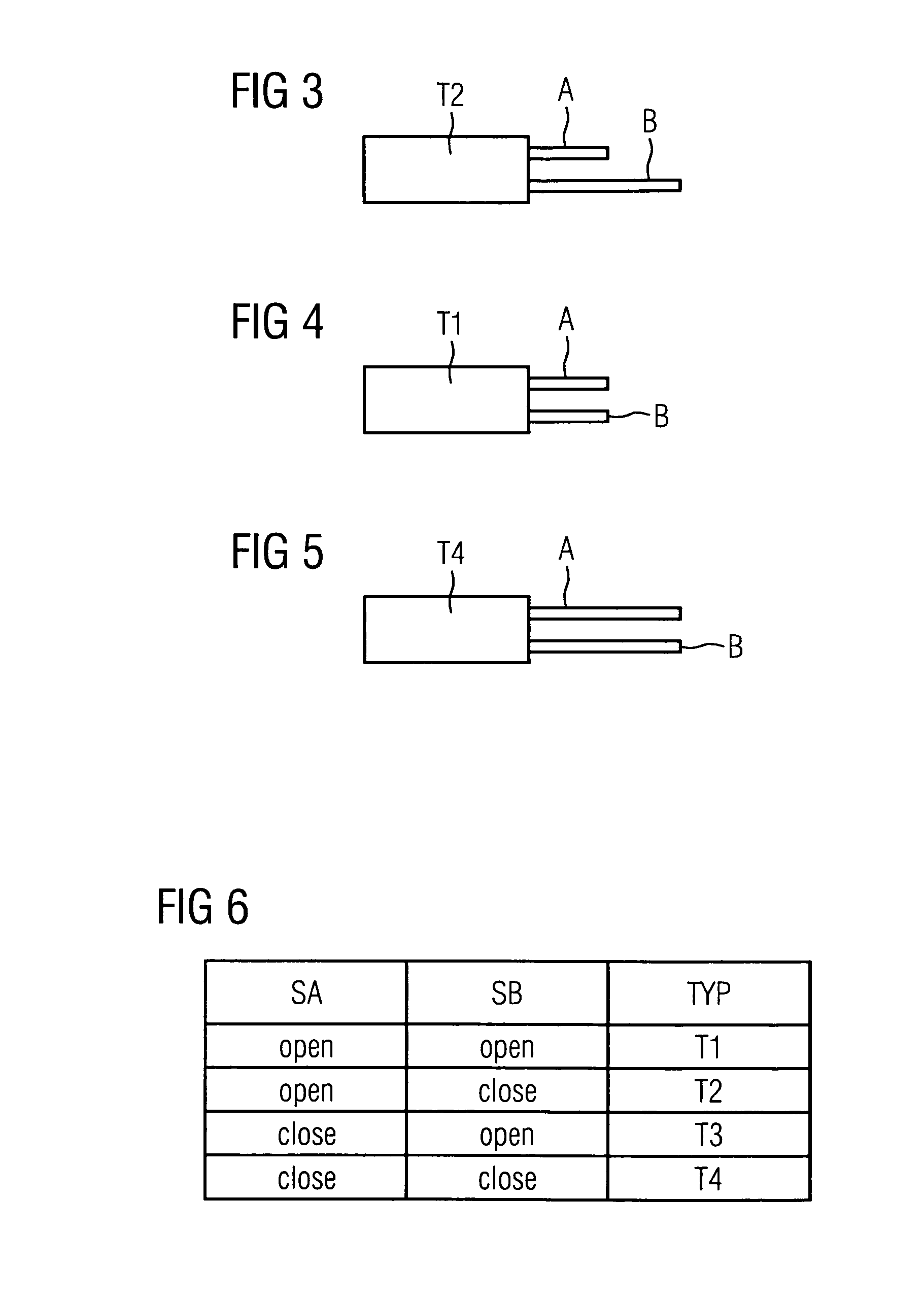Automatic identification of receiver type in hearing aid devices
a hearing aid and receiver type technology, applied in the field of hearing aid systems, can solve the problems of over-emphasis of user discomfort and hearing damage, and achieve the effect of avoiding inconvenient adjustment and avoiding inconvenient us
- Summary
- Abstract
- Description
- Claims
- Application Information
AI Technical Summary
Benefits of technology
Problems solved by technology
Method used
Image
Examples
Embodiment Construction
[0025]FIG. 1 shows a hearing aid system according to the invention, which comprises merely one hearing aid device 1 having a device component 2 which may be worn behind the ear and an earpiece 3 which may be worn in the ear. The microphone 4 is present with the sound inlet 5 for receiving an acoustic input signal and converting said signal into an electrical input signal. This is connected by means of electrical cables 6 to a signal processing unit 7. In the signal processing unit 7, the electrical input signal emitted by the microphone 4 is processed and amplified depending on the signal frequency and conducted via electrical cables 8 and 13 as well as contacts 9 to a receiver 10, which converts the electrical output signal generated by the signal processing unit 7 into an acoustic output signal and emits said output signal via a sound channel 11 into the auditory canal of a user. In the hearing aid device 1 according to the exemplary embodiment, the receiver 10 is located in the e...
PUM
 Login to View More
Login to View More Abstract
Description
Claims
Application Information
 Login to View More
Login to View More - R&D
- Intellectual Property
- Life Sciences
- Materials
- Tech Scout
- Unparalleled Data Quality
- Higher Quality Content
- 60% Fewer Hallucinations
Browse by: Latest US Patents, China's latest patents, Technical Efficacy Thesaurus, Application Domain, Technology Topic, Popular Technical Reports.
© 2025 PatSnap. All rights reserved.Legal|Privacy policy|Modern Slavery Act Transparency Statement|Sitemap|About US| Contact US: help@patsnap.com



